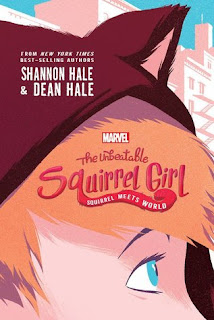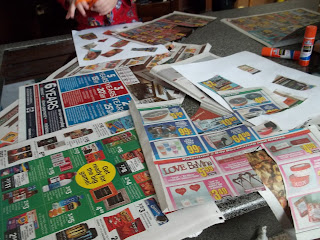In the light of Black History month, I read
The Watsons Go to Birmingham- 1963 by Christopher Paul Curtis. It is a Newbery Award Winner and a winner of the Coretta Scott King Award.
I remembered kind of liking this book when my teacher read it to the class when I was in third grade, but I couldn't remember anything about it so I thought I'd reread it for Black History Month.
The first thing that stuck out to me and surprised me was the language in this book. There was an awful lot of swearing that I did not enjoy. I'm pretty sure my teacher must've censored that out when she read this book to my class. I know I, for one, would've been horrified at that age to hear words like that in a book.
The narrative style of the book was a little choppy. The narrator is a ten-year-old boy named Kenny. This is not clear through much of the book. At first, I wasn't sure if the narrator was a boy or a girl or how old he was because those details weren't explicitly said at the beginning of the book. Kenny tells anecdotes about different members of his family, I guess as a way to introduce us to all the characters and get to know them and the family dynamics.
There's his older brother Byron, who is a teenage narcissistic bully. He picks on his brother and doesn't like to do things with the family. He hangs out all day with his best friend Buphead, where they go around terrorizing all the other kids at school who are all younger than them. He gets in trouble for various things throughout the book, some of which include lighting matches in the bathroom and getting a perm to straighten his hair.
Their little sister, Joetta (Joey), is portrayed to be somewhat of a goody-goody. She's the only child who regularly attends Sunday School, and she always cries when their mother threatens to punish Byron for all his misdeeds and begs her not to.
The father is somewhat of a joker. He's always cracking jokes and laughing, which is a nice contrast to their mother who just seems to be constantly talking about how much she misses home and worrying about what to do with Byron.
The mom worries a lot about how to keep her oldest boy from doing all the stupid things he does. She shakes her head at her husband's antics and obviously misses her family and her old home.
Kenny gets picked on at school quite a bit until a new student comes, who Kenny at first thinks will get picked on more than him, so he'll get a break. But they end up becoming best friends.
The family doesn't start heading to Birmingham until over halfway through the book. The go to visit their mom's mother and plan to leave Byron there over the summer and perhaps longer, so he can learn how to grow up and become more responsible for his actions and learn how to be respectful.
After they arrive at Birmingham, the book gets weirder. It already was a bit disjointed with the anecdote style, but in Birmingham, Byron is suddenly acting like the responsible one, and Kenny starts making poor decisions. He decides to go to this swimming area that he's told not to go to because of a whirlpool that has drowned a few people in the past. He mishears and has no idea what a whirlpool is. His brother tells him it's Winnie the Pooh's evil twin brother the Wool Pooh. When Kenny starts drowning, he sees this shadow, the Wool Pooh, who's pulling him down. While struggling to get free of its evil grasp, he sees his sister telling him to swim up. He does, just in time for his older brother to save him from drowning.
After this, Kenny acts differently. His brush with death has left him rattled, and he thinks he sees this Wool Pool a few more times. When a bomb is set off in the church during Joey's Sunday School class, Kenny thinks he sees the Wool Pool again trying to take his sister away. After this incident, the family quickly heads back to Birmingham. Byron and Kenny both act differently. For once, Byron acts like the responsible older brother. He's the only one who knows about Kenny almost drowning and is the one who finally figures out what's going on with Kenny.
I thought the ending between Kenny and Byron was really sweet. I even cried. But the whole book seemed really disjointed and the sudden change with Byron as soon as they get to Birmingham seems really unrealistic. The whole Wool Pooh thing is just weird as well as all the seeing people that weren't really there thing. Kenny sees Joetta at the swimming hole, and she sees him waving at him near the church when he was actually still at the house. That part's just strange.
I thought this book was going to be a really good historical fiction book, but there's only the one event that takes up such a minor part of the book that was even part of history. I wasn't too impressed with this book.











